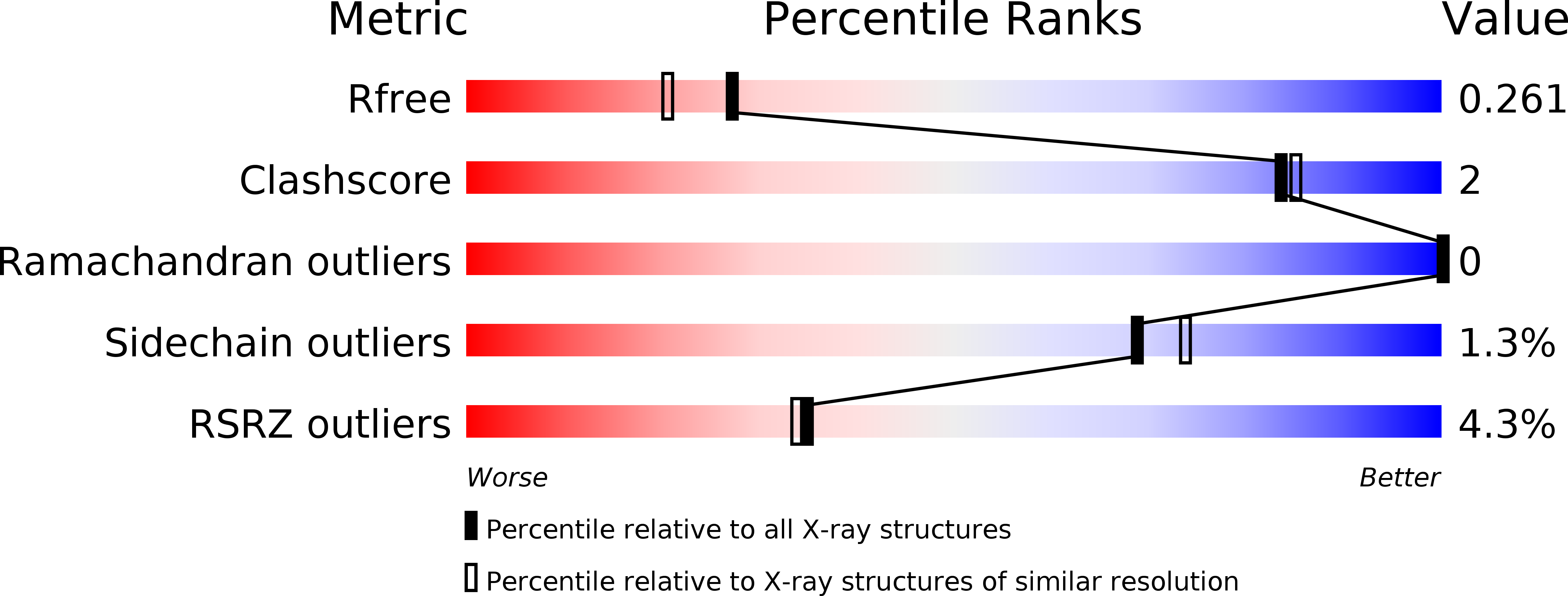
Deposition Date
2017-09-26
Release Date
2017-10-18
Last Version Date
2024-03-13
Entry Detail
PDB ID:
6B4A
Keywords:
Title:
Crystal structure of the C-Terminal Domain of Doublecortin (TgDCX) from Toxoplasma gondii ME49
Biological Source:
Source Organism:
Toxoplasma gondii (Taxon ID: 5811)
Host Organism:
Method Details:
Experimental Method:
Resolution:
2.00 Å
R-Value Free:
0.26
R-Value Work:
0.18
R-Value Observed:
0.19
Space Group:
P 21 21 21


